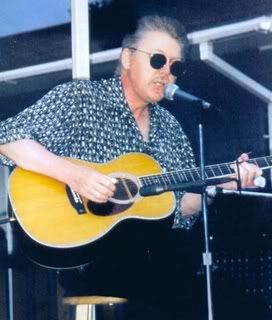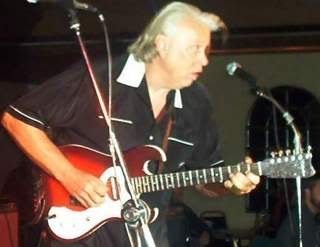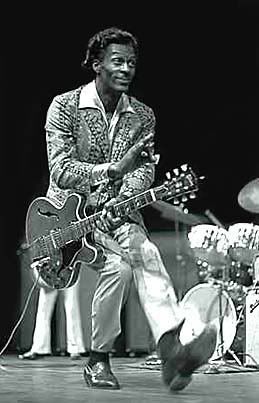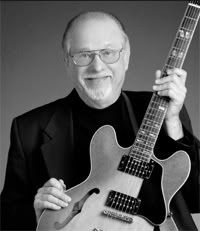
Some people called it a family get together. One likened it to a class reunion with all the people you like.
Those observations were made by fans attending last Saturday's tribute to Jim "Smiley" Lewis at the Terrace Bay Inn.
Hundreds of people, including many out-of- towners, packed the motel's ballroom for a ten-hour show, which included dozens of well-known local, regional and national performers. Most were friends of Smiley, who died from diabetes complications on Aug. 13, 2005 at the age of 57.
Musicians from Milwaukee, Lansing, Green Bay, and around the Upper Peninsula lined up to pay their musical respects to the Escanaba native who took up music as a teenager and played in numerous bands, building a reputation as a respected blues and rock-a-billy artist.
Headlining the benefit, which aided the Delta Area Animal Society, was Las Vegas based "Big Al" Ek, an accomplished singer and multi-instrumentalist who performed with Smiley in The Shuffle-aires. Other players to take the stage included keyboardist Steve "Doc" Yankee of Lansing, saxophonist Bob Jennings of Milwaukee and local favorites, The Lark Brothers- Dave, Sam and Bill.
In fact, guitarist Dave Lark conceived the idea of a concert to pay tribute to his friend. The two were in various bands together including Salvador Foxx and The Blues Bombers. Lark contacted Ek, another close friend of Smiley, and the two got the "ball rolling" for the event which took several months to plan. Soon other performers indicated their desire to play.
With so many musicians ready to take the stage and little time to practice, much of the show was dedicated to jam sessions. To get the program going early, a group including Ek and the Larks opened the show at mid-afternoon. The strategy worked. Fans came early and stayed.
Many of the musicians grew up in the Escanaba area and performed in various bands through the years before moving to greener pastures. Most found they still had fans here.
"Never before has there been so much talent oozing out of one room," said Greg Tolman, a musician who has judged numerous Island Idol talent contests at the local casino.
Most of the performances were blues or rock-a-billy, although Jay Brodersen of Escanaba teamed with John Parrott of Milwaukee for an acoustic jazz set. Bands Sit Down Francis and Terracotta Half Life added some rock music to the mix.
The night even included the surprise appearance of Fast Eddie, a veteran harmonica player from Marquette, and his band Blues Trust.
"This is just so cool," said Escanaba music teacher John Beck, echoing many people's feelings about the turnout of musicians and fans.
Beck took to the stage himself, playing a rousing guitar solo. Two sets of skins were required to accommodate drummers Keith Balistreri, Dave Cass, Rich White, Craig Seckinger, Ron Patron and Dave Braun.
Former Escanaba resident Mike Riegel, now based in Sheboygan, also lit up the room with his inventive lead guitar work. Other notable performers included Dean Peterson, Bruce Douglas, Fred Cavill, and Mike and John Waldsmith.
While people were enjoying themselves on the dance floor, talking with old friends, or just delighting in the jams, most were aware the entertaining day evolved from the passing of a friend.
Smiley was remembered during the event with a specially designed "Blues Cat" t-shirt and the re-release of his 1991 album, "No Explanation Necessary," now available on compact disc. A slide show depicting his life in pictures was a popular attraction as was a display of many posters from his music career.
As the show closed, Ek complimented the crowd. "This is why I brag about you in Las Vegas. You have to have a closing time here, or you won't go home." He offered more praise. "Wendy Pepin did the whole thing. Don't let anybody fool you," Ek said about organizing the concert.
The day was a success by any measure. Dozens of talented musicians donated their time to play before hundreds of fans in celebration of Smiley's musical legacy. And, even with all that fun, money was raised for his favorite charity.
Smiley would have been pleased.


